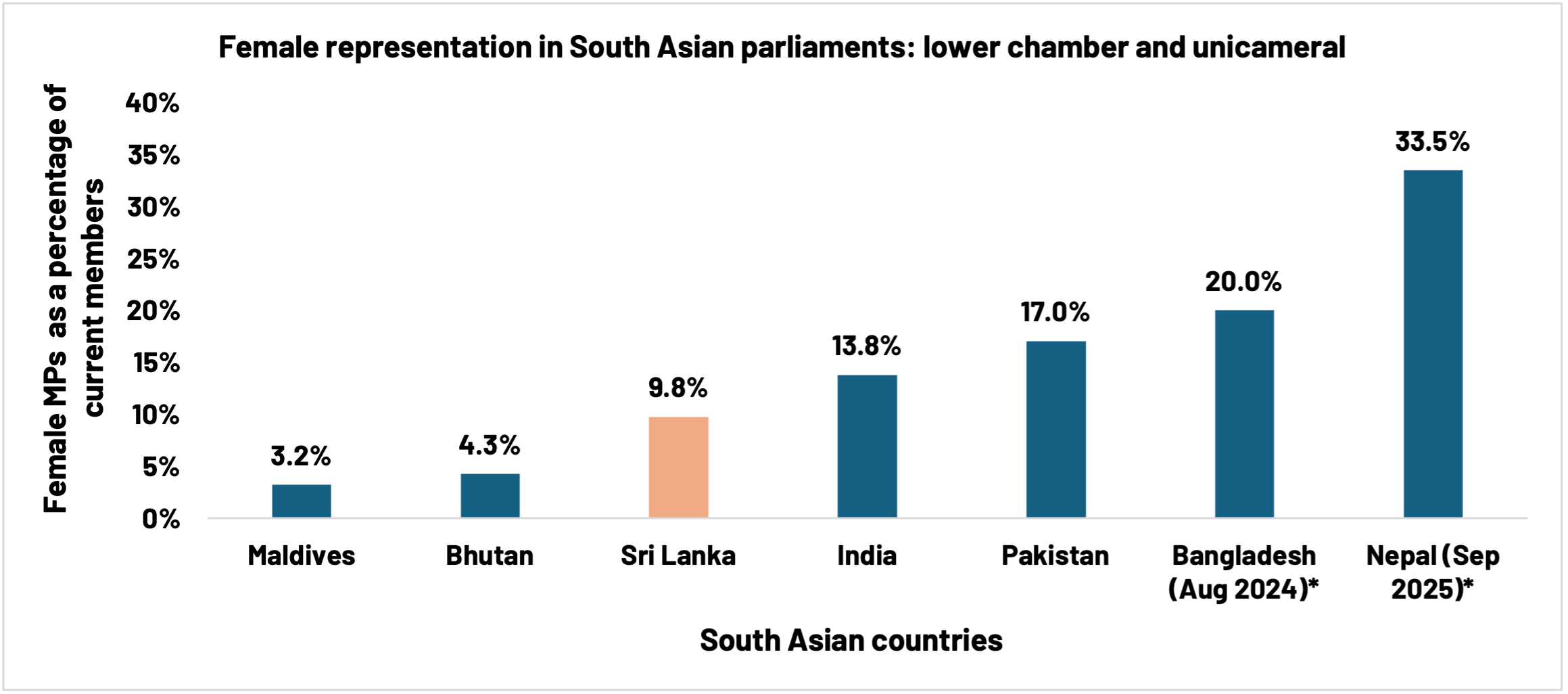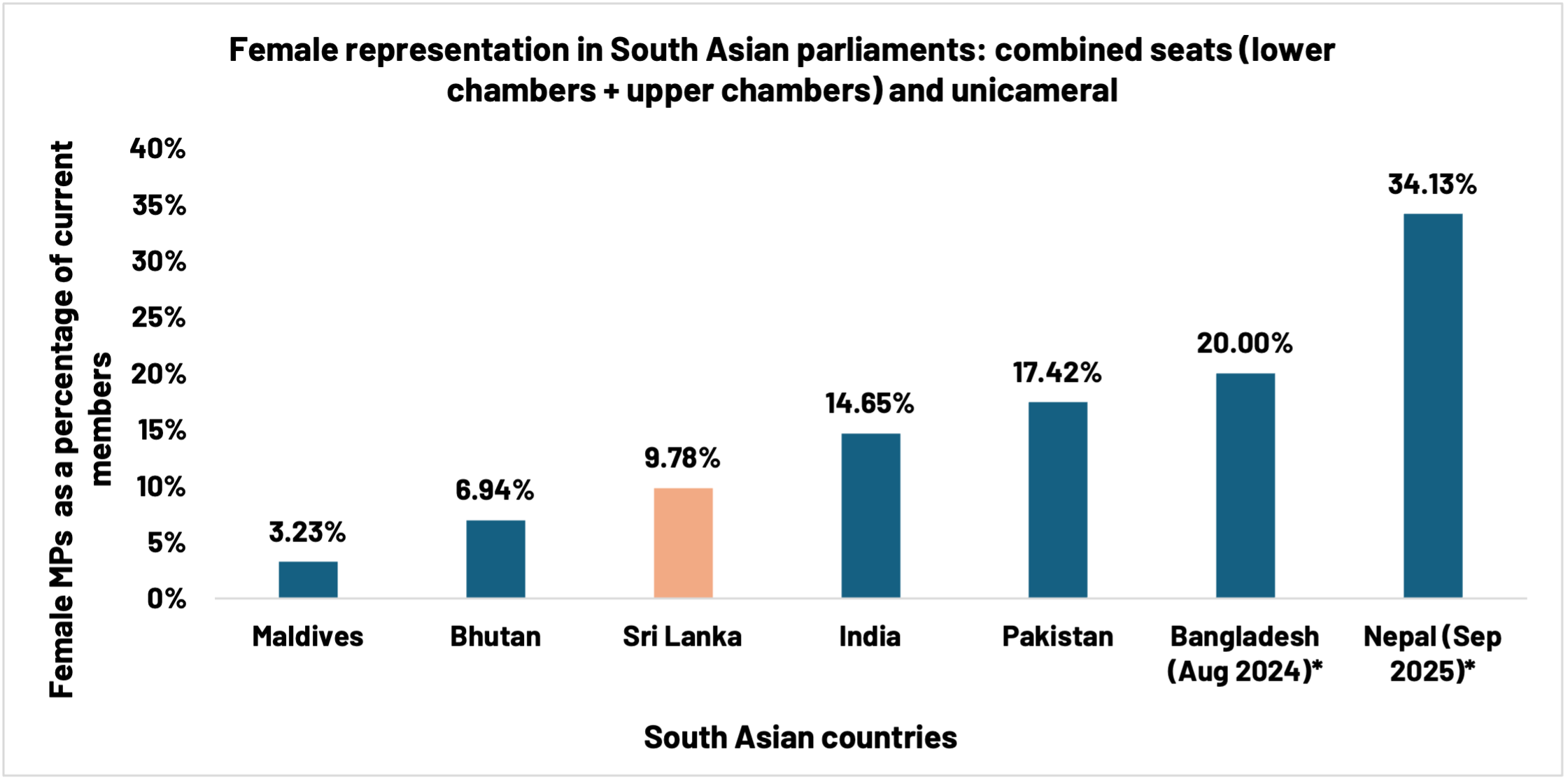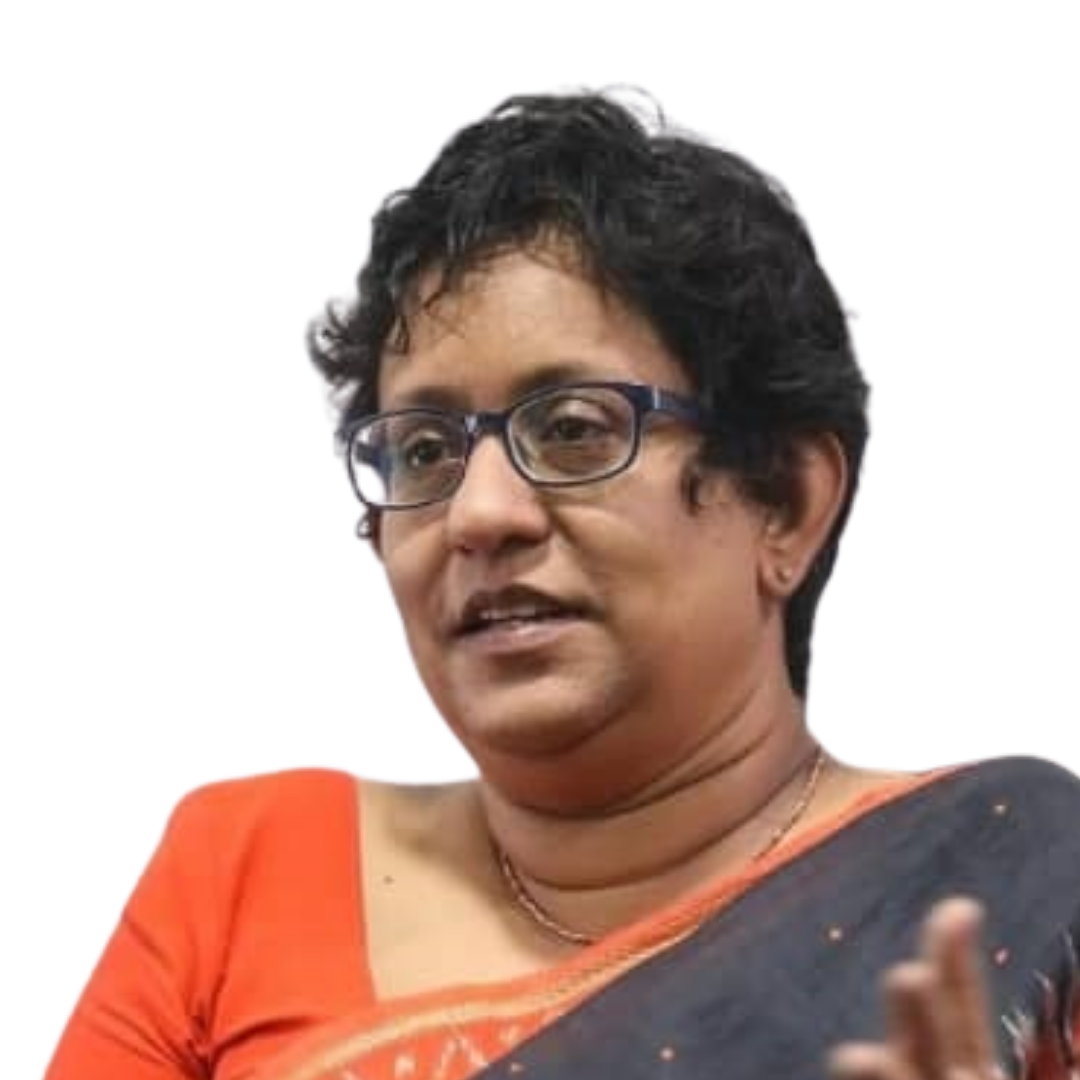Fact Check
Prime Minister Amarasuriya claimed that although female representation in Sri Lanka’s Parliament is higher than in previous parliaments, it remains one of the lowest in South Asia.
To check these claims, FactCheck.lk reviewed data from the Parliament of Sri Lanka, and the Inter-Parliamentary Union (IPU).
The data confirms that the current female representation in the Tenth Parliament stands at 9.8%, which is an increase compared to previous parliaments (1978–2024). During that period, female representation averaged only 5.3% and never exceeded 6.2% (see Exhibit 1).
FactCheck.lk also examined female representation across the seven South Asian countries (excluding Afghanistan, which does not have an elected parliament). As shown in Exhibit 2, when comparing unicameral parliaments (such as Sri Lanka’s) and lower chambers, Sri Lanka’s 9.8% places it among the bottom three—above only the Maldives (3.2%) and Bhutan (4.3%). The remaining four countries—India, Pakistan, Bangladesh, and Nepal—have significantly higher female representation, ranging from about one and a half to more than three times Sri Lanka’s share, leaving Sri Lanka well below the regional average
When considering combined chambers (in both unicameral and bicameral systems), Sri Lanka still ranks among the lowest three, again followed by the Maldives and Bhutan (see Exhibit 3).
In sum, while Sri Lanka’s current parliament has achieved its highest-ever level of female representation, it continues to lag behind most South Asian countries.
Therefore, we classify the prime minister’s claim as TRUE.
*FactCheck.lk’s verdict is based on the most recent information that is publicly accessible. As with every fact check, if new information becomes available, FactCheck.lk will revisit the assessment.
Additional Note 1: Female representation is calculated by dividing the number of seats held by female MPs by the total number of current members in parliament.
Additional Note 2: Except for Sri Lanka, the Maldives, and Bangladesh, all other South Asian countries have bicameral parliaments with two chambers. For Exhibit 2, the analysis focused on the lower chambers, as recommended by the UN in the Sustainable Development Goals methodology for indicator 5.5.1a, since their members are directly elected and tend to win in a manner similar to Sri Lanka’s parliament.
Additional Note 3: As of 29 September 2025, Bangladesh and Nepal have dissolved their parliaments in anticipation of elections and the most recent data prior to dissolution was used for Bangladesh (August 2024) and Nepal (September 2025). The Afghanistan government has lost international recognition and is excluded from this analysis.
Exhibit 1: Representation of female MPs in the Sri Lankan Parliaments

Exhibit 2: Female representation in South Asian parliaments – lower chamber and unicameral

Notes:
*The parliaments of Bangladesh and Nepal were dissolved in August 2024 and September 2025 respectively. For the analysis, the most recent pre-dissolution figures were used.
Exhibit 3: Female representation in South Asian parliaments: combined seats (lower chambers + upper chambers) and unicameral

Notes:
*The parliaments of Bangladesh and Nepal were dissolved in August 2024 and September 2025 respectively. For the analysis, the most recent pre-dissolution figures were used.
Sources
Parliament of Sri Lanka, Lady Members, available at: https://www.parliament.lk/lady-members
Inter-Parliamentary Union (IPU), Data Explorer, available at https://data.ipu.org/data-explorer/
United Nations Statistics Division, Proportion of seats held by women in (a) national parliaments, available at https://worldbank.github.io/sdg-metadata/metadata/en/5-5-1a/


